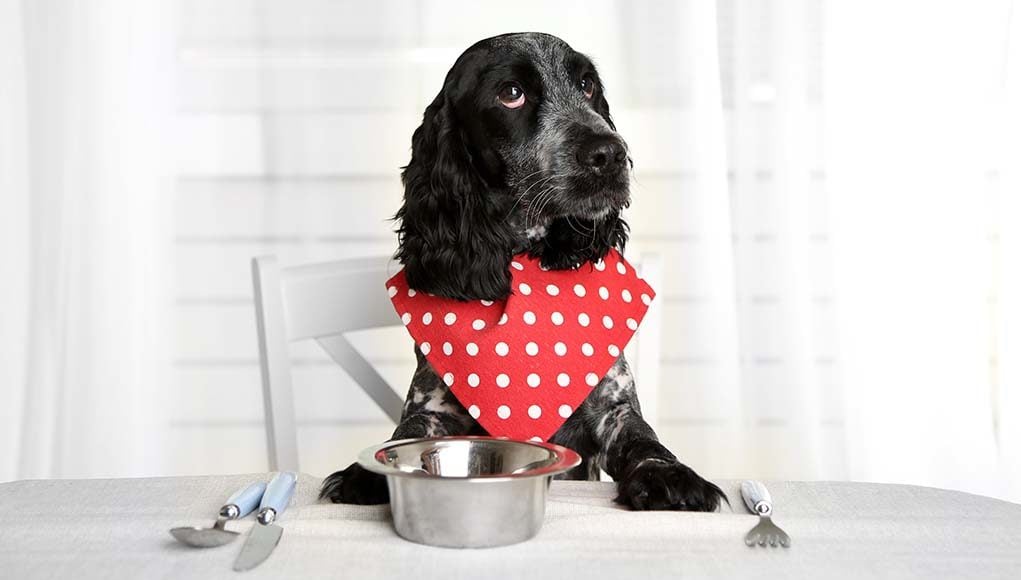Table of Contents
The jury is in; fresh food is better for your dog. Pet owners notice a difference in their dogs' overall health and well-being, but it seems pets also enjoy it more than commercial dog food.
Try making your homemade dog food and choose from tons of our recipes here, and you will see how much your pup likes it when he cleans his bowl faster than ever before.
Today, with so many controversies surrounding the pet food industry, many dog owners choose to cook their homemade dog food and avoid commercial brands altogether.
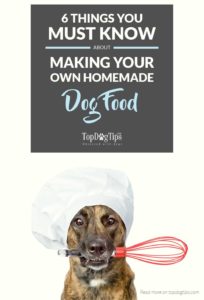 Don't start preparing your dog's dinner plate just yet; some things to consider.
Don't start preparing your dog's dinner plate just yet; some things to consider.
First, you need to have a conversation with your vet before switching your dog to a homemade diet.
Not all homemade diets offer the right amount of nutrients for all dogs.
Your vet will give you tips and advice on feeding your specific dog using homemade dog food recipes.
A veterinarian will also tell you if adding particular dog vitamins or supplements like omega-3 enhances your dog's meals nutritionally.
Nervous about making your homemade dog food? Don’t let fear stop you!
As long as you follow the many homemade recipes for dog food we regularly publish here and supplement your pet's diet with essentials like fish oil supplements, everybody will win.
You can find more homemade pet food recipes all over the internet. No matter your dog's needs, you'll find something that works for your canine and budget.
Here are my six best tips on making your homemade dog food. If you want our homemade dog food pro-Samantha to walk you through it, watch the below video.
WATCH THIS: How To Make Homemade Dog Food (Video Guide)
6 Tips for Making Your Own Homemade Dog Food
1. Raw isn't always better; cook everything when needed
Raw food diets are trendy for people and pets. There are risks to not cooking your food, even natural dog food meals.
This shortlist is just an example. It does not have every disease your dog can get from uncooked and undercooked food products, but it should enlighten you on some of the pros and cons of this approach:
- Eggs and Chicken – Studies show that veterinarians warn that dogs eating raw meals can get Salmonella poisoning from contaminated, uncooked, or undercooked meat. You may not notice this on them at first.
- Unpasteurized Milk – Raw milk can cause Toxoplasmosis in dogs. It's a prevalent issue observed in many pets who are fed a raw diet when the “paleo” approach gets out of hand.
- Pork – Speaking of not cooking your meat, pork, in particular, can be dangerous to dogs. Raw and undercooked pork can cause the parasitic disease called Trichinosis in canines, which was also observed primarily in pets fed a raw diet.
- Raw Vegetables – Veggies are the least suspicious item on the list. However, it's still important to keep in mind that regularly giving your natural dog vegetables can infect your canine with diseases like Listeria and Staph. Some raw veggies are okay.
Don't let the above scare you.
There are some valid reasons to feed your dog raw food diet as long as you know what you're doing and follow veterinarians and health professionals (rather than get tips on doggy forums).
Note that I'm not suggesting that homemade dog food is not suitable for your dog because raw feeding may not always be the best choice.
The two are not the same. If you're afraid of feeding your dog raw, cook your dog's homemade meals.
If you're new to raw feeding a dog, read our extensive guide on The Raw Dog Diet.
2. Know your dogs and what they need
 Amy Marshall from Primal Pooch explains how some dogs are at a greater risk for having problems with undercooked food than others and may not be interested in eating raw.
Amy Marshall from Primal Pooch explains how some dogs are at a greater risk for having problems with undercooked food than others and may not be interested in eating raw.
She also provides some tips on how to try and get your dog to start eating.
When making your homemade dog food, patience will be essential. However, sometimes other reasons out of your control could be a factor.
Suppose your pet fits into one of the below categories. In that case, you are probably better off making sure you are either (a) buying the best quality commercial dog food kibble or (b) you are correctly cooking it all yourself.
- Social Settings – If your canine spends most of his walks in new places you haven't explored before, vets recommend keeping him on a cooked dog food diet.
- This is because dogs may contact germs he's not well resistant to yet, which can quickly weaken the immune system when your dog is not ready.
- Pancreatitis, Liver Problems, Other Digestive Issues – If your dog has digestive system issues, a raw food diet is not recommended because it's challenging to track how your pet reacts.
- If you prepare your dog’s food at home, make sure it is fully cooked. There are specific diets for dogs' food allergies, and here's some excellent advice on feeding dogs with sensitive stomachs.
- Cancer and Chemotherapy – If you recently found out that your canine has cancer or is already undergoing chemotherapy, you need to make sure that everything in his diet is fully cooked.
- Not only that, but you absolutely must follow the same diet that hits every single nutrient he needs and must avoid a letter.
- Kidney Failure – Fresh food diets for dogs often provide pets with lots of vitamins, minerals, and proteins.
- It must be a good thing, right? Not always. If your dog has weakened kidneys, it can cause a problem because protein is very taxing. Make sure you know how to feed dogs with kidney problems.
A proper diet for dogs may not be easy to figure out, particularly when you have specific health issues.
When cooking your homemade dog food is that not all recipes, approaches, and advice work for all dogs.
Consult with your veterinarian and then find out exactly how to feed your pet for optimal health.
RECOMMENDED: Can Dogs Go Vegan? Ins and Outs of Vegetarian Diet for Dogs
3. Dog food cooking times and temperature
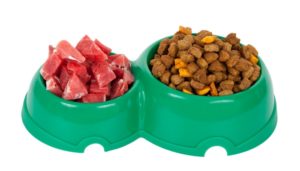 By now, you know that not cooking your homemade dog food properly can hurt your pet (in some circumstances).
By now, you know that not cooking your homemade dog food properly can hurt your pet (in some circumstances).
But what the temperature needs to be to keep your canine companion healthy when cooking your homemade dog food?
Worst comes to worst. You'll need to be more vigilant. Use a reliable cooking thermometer, and always insert the metal probe into the middle of the most significant part of the dish.
These are the proper temperatures for safety:
- Chicken, Turkey, Other Fowl – 165° F / 74° C
- Beef and Lamb – 145° F / 63° C
- Ground Beef and Lamb – 160° F / 71° C
- Pork – 145° F / 63° C
- Ground Pork – 160° F / 71° C
- Eggs – Cook until whites and yolks are firm or 155° F / 69° C
- Fish – 165° F / 74° C
- Fruits and Vegetables – 135° F / 57° C
Just as there are standards for human cooking (even if you may not always be aware of them because we follow packing instructions), rules apply to cooking dog food. It's never a good idea to give your dog undercooked or overcooked food.
4. Healthy dog nutrition basics
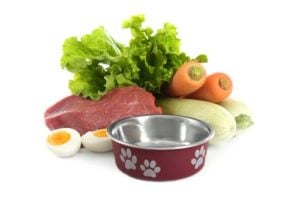 Canine nutritional needs should be the top concern when making your homemade dog food.
Canine nutritional needs should be the top concern when making your homemade dog food.
Many people call dogs “carnivores” or meat-eaters. This is not true.
Dogs, like people, are omnivores – a scientific fact. It has been proven in several studies, with this one being the most oft-quoted one.
To read more on why dogs are omnivores and not carnivores, there are some excellent ScienceMag articles.
Dogs evolved to enjoy meat and a plant-based diet. This is why they go outside and eat leaves and grass. For food your dog will love, make a mix of meats and vegetables.
Some examples of good quality ingredients include:
- Beets – Affordable, Low Cost Source of Fiber
- Fish – Omega Fatty Acids
- Meats (Including Fish) – Proteins, Vitamins, and Minerals
Fruits and vegetables provide a small amount of fiber, carbohydrates, vitamins, and minerals, and they aren't all healthy for dogs.
Dogs benefit from a variety, just like people, but you have to be careful which fruits and veggies you're adding to their food.
Stay away from:
- Grapes and raisins
- Apple seeds
- Banana peels (but bananas are okay)
- Avocados
- Figs
- Cherry seeds, leaves (but cherries are healthy)
- Oranges
- Lemons
- Coconut (but coconut oil is beneficial)
- Seasonings
There are some food items dogs should not be eating. See some of the most common toxic foods dogs should not eat here and avoid.
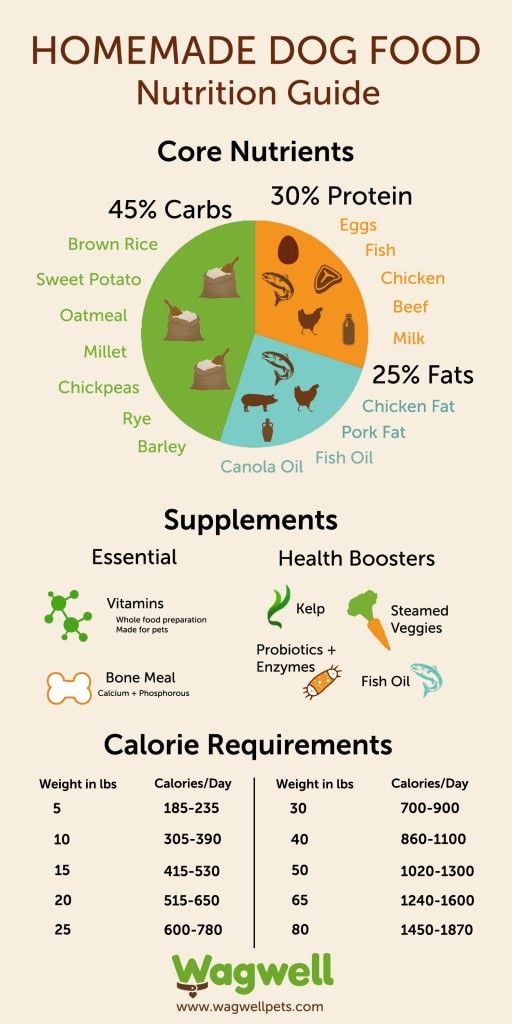
5. Making your homemade dog food on a budget
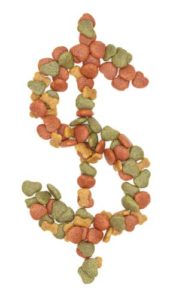 The main disadvantage of making your homemade dog food is that it is expensive.
The main disadvantage of making your homemade dog food is that it is expensive.
Not everyone can afford to make home-cooked meals for their pets.
But do not despair! As I have done, you can make budget-friendly doggy meals for your pet that are affordable for virtually any dog owner.
Times have changed human meals. There was a time when everything on the animal was consumed and used. Nothing was wasted.
These days you don’t see too many people eating hearts, livers, tongues, or other organs (even though they are very nutritional).
On the other hand, your dog loves organ meat, and they are suitable for him too! Whether you are a hunter or a shopper, it is cheaper to buy these unwanted meats for your pet.
You may even be able to get some free from your local butcher.
You can also use in-season produce to save some money. Do a little research to learn what foods are in season.
These will often be cheaper. Try your local farmers' market for these foods. Make your dog’s meal plan a seasonal affair to make it more affordable.
You can find a few more budget tips here:
- 19 Tips on How to Save on Dog’s Expenses
- Budgeting Guide for Dog Owners
- 18 Tips on How to Save Money on Dog Care
- Where to Buy Cheap Dog Supplies?
- 48 Ways to Save Money With Dogs
Check out the above articles for some dog-related budgeting and money-saving tips.
6. How to store your homemade dog food
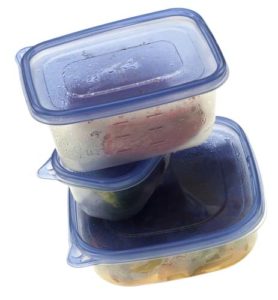 Homemade dog food does not have preservatives like commercial dog food, which means you must know how to store all your homemade dog food.
Homemade dog food does not have preservatives like commercial dog food, which means you must know how to store all your homemade dog food.
It would help if you were careful not to feed your puppy old, spoiled food.
When you make dog food at home, you have to use the same leftover guidelines for your meals.
If food is not stored correctly, your dog can get sick.
Here are some quick and easy to follow tips on how to store homemade dog food after you have cooked it:
- Cooking – Let the food sit for a few minutes to ensure everything is cooked entirely.
- Counter Time – Do not let food sit out for more than 2 hours because the bacteria will grow. Keep food covered while it is out on the counter, too.
- Refrigerator and Freezer – Do not put homemade dog food into the freezer or refrigerator too early. Please wait until it is lukewarm (not hot) to the touch. Only keep foods in the fridge for up to 3 days. Any longer than that, and you need to freeze it.
- The Leftover Leftovers Myth – Don't fall for this myth because you can refreeze leftovers that have already been reheated. You cook your dog's meal and freeze it. Next week, you take it out and thaw it.
- It is more than you expected. You can refreeze part of that dish when you heat it. You are getting it to 165° F / 74° C and correctly fantastic. You do not have to throw out the unneeded portion.
And that's all you need to keep in mind when cooking your homemade dog food.
I hope these tips were helpful, but please let me know if you have questions or discuss your dog's homemade diet!
READ NEXT: 15 Ways to Make Sure Your Dog Gets Enough Good Quality Meat


